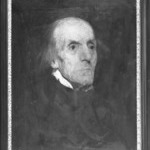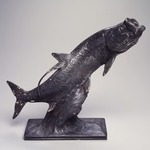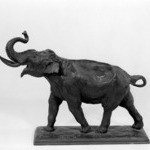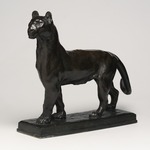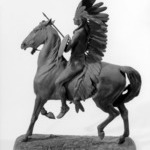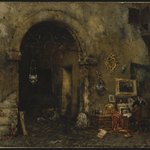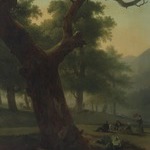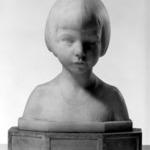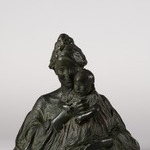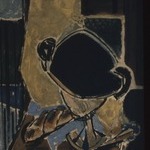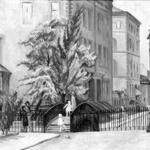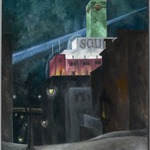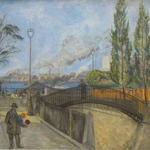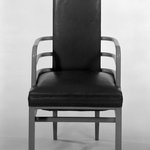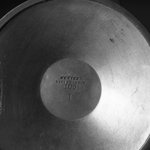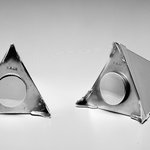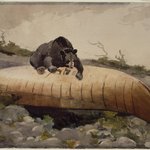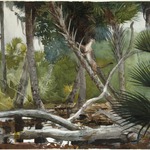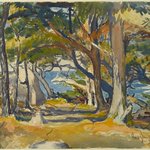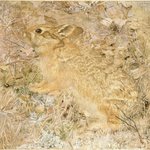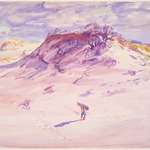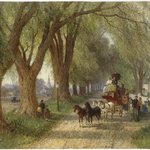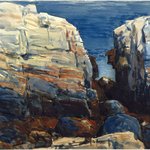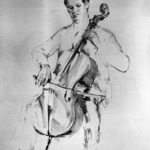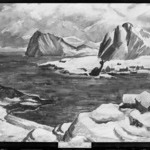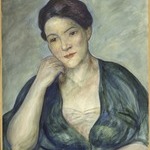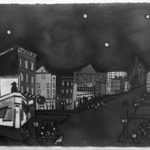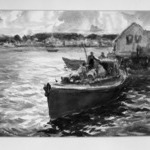
This image is presented as a "thumbnail" because it is protected by copyright. The Brooklyn Museum respects the rights of artists who retain the copyright to their work.
The Cabin - Tennessee
John Whorf
American Art
Like his teacher Charles Hawthorne, John Whorf developed as a watercolorist under the powerful influence of John Singer Sargent, whose works were frequently exhibited in the United States throughout the first decades of the twentieth century—most notably at the Brooklyn Museum. In this image of a sun-dappled cabin in rural Tennessee, Whorf emulated Sargent’s use of freely brushed washes to describe the colorful tints of shifting shadows. Sargent apparently approved of Whorf’s direction, purchasing a watercolor from the young man’s first solo exhibition, in Boston, in 1924.
MEDIUM
Watercolor over graphite on cream, thick, moderately textured, heavily sized, wove paper
DATES
1928
DIMENSIONS
15 3/4 x 23 in. (40 x 58.4 cm)
Frame: 23 7/8 x 29 15/16 x 1 9/16 in. (60.6 x 76 x 4 cm) (show scale)
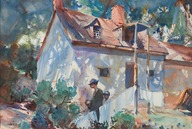


SIGNATURE
Signed lower left: "John Whorf"
COLLECTIONS
American Art
ACCESSION NUMBER
29.68
CREDIT LINE
Carll H. de Silver Fund
MUSEUM LOCATION
This item is not on view
CAPTION
John Whorf (American, 1903–1959). The Cabin - Tennessee, 1928. Watercolor over graphite on cream, thick, moderately textured, heavily sized, wove paper, 15 3/4 x 23 in. (40 x 58.4 cm). Brooklyn Museum, Carll H. de Silver Fund, 29.68. © artist or artist's estate (Photo: Brooklyn Museum, 29.68_PS2.jpg)
IMAGE
overall, 29.68_PS2.jpg. Brooklyn Museum photograph, 2006
"CUR" at the beginning of an image file name means that the image was created by a curatorial staff member. These study images may be digital point-and-shoot photographs, when we don\'t yet have high-quality studio photography, or they may be scans of older negatives, slides, or photographic prints, providing historical documentation of the object.
RIGHTS STATEMENT
© artist or artist's estate
Copyright for this work may be controlled by the artist, the artist's estate, or other rights holders. A more detailed analysis of its rights history may, however, place it in the public domain.
The Museum does not warrant that the use of this work will not infringe on the rights of third parties. It is your responsibility to determine and satisfy copyright or other use restrictions before copying, transmitting, or making other use of protected items beyond that allowed by "fair use," as such term is understood under the United States Copyright Act.
For further information about copyright, we recommend resources at the United States Library of Congress, Cornell University, Copyright and Cultural Institutions: Guidelines for U.S. Libraries, Archives, and Museums, and Copyright Watch.
For more information about the Museum's rights project, including how rights types are assigned, please see our blog posts on copyright.
If you have any information regarding this work and rights to it, please contact copyright@brooklynmuseum.org.
RECORD COMPLETENESS
Not every record you will find here is complete. More information is available for some works than for others, and some entries have been updated more recently. Records are frequently reviewed and revised, and we welcome any additional information you might have.
